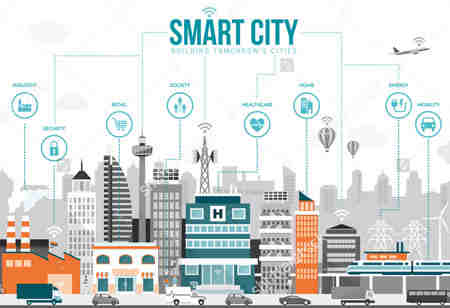THANK YOU FOR SUBSCRIBING
The Transportation Innovation in Smart Cities
Autonomous vehicles and ride-sharing services will take up a lot of on-road curb space. While delivery robots and personal transportation devices, like scooters, will take up a lot of on-sidewalk curb space.

By
Apac CIOOutlook | Tuesday, February 04, 2020
Stay ahead of the industry with exclusive feature stories on the top companies, expert insights and the latest news delivered straight to your inbox. Subscribe today.
Autonomous vehicles and ride-sharing services will take up a lot of on-road curb space. While delivery robots and personal transportation devices, like scooters, will take up a lot of on-sidewalk curb space.
FREMONT, CA: To execute the potentials of smart cities with the focus of making life simpler and function more efficiently, the need for connective innovation is needed. The implementation of the Internet of Things will help simplify the way people, objects, and utilities move through the city.
The concern for innovation in smart cities is turning to the demand-side, which means finding ways to change the management of the infrastructure that is already in place. The need to effectively manage parking, stop lights, emergency traffic, and personal mobility has become a priority for smart cities. The demand-side innovation aims at changing the way a city's inhabitants interact with the city's existing infrastructure. Using real-time big data and connectivity that will come at the hand of 5G, these real-life problems become easier to solve.
When all digital and non-digital systems in a city are linked, smart cities will witness the capacity to access all aspects of city-wide transportation and management from a technological data-driven standpoint. And this will be possible with the utilization of AI.
What happens on the side of a road has become a growing concern in smart cities. The curb allows for pedestrian movement, product deliveries and shipments, and smart food robots to travel. It is one of the most valuable real estates in a city and managing the former properly has become an essential factor for smart city mobility. Autonomous people transport will primarily take place on roadways, thanks to autonomous personal or shard vehicles. Implementing appropriate measures in traffic control is needed, or else smart cities will encounter severe curb congestion on both sides: on the road and the sidewalks.
Autonomous vehicles and ride-sharing services will take up a lot of on-road curb space. While delivery robots and personal transportation devices, like scooters, will take up a lot of on-sidewalk curb space. Cities will have to properly manage the road and side-walk to ensure that transportation innovations do not unintentionally congest smart cities.
See Also: Top Proptech Solution Companies





